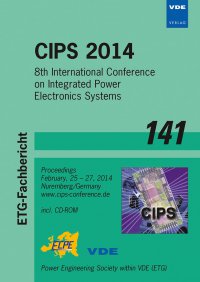Partial transient liquid phase bonding for high-temperature power electronics using Sn/Zn/Sn sandwich structure solder
Conference: CIPS 2014 - 8th International Conference on Integrated Power Electronics Systems
02/25/2014 - 02/27/2014 at Nuremberg, Germany
Proceedings: CIPS 2014
Pages: 6Language: englishTyp: PDF
Personal VDE Members are entitled to a 10% discount on this title
Authors:
Park, S. W.; Nagao, S.; Sugahara, T.; Suganuma, K. (Institute of Scientific and Industrial Research, Osaka University, Mihogaoka 8-1, Ibaraki, Osaka 567-0047, Japan)
Katoh, Y.; Ishino, H.; Sugiura, K. (DENSO CORPORATION, Materials R&D Div., Komenoki-cho Minamiyama 500-1, Nissin, Ai-chi 470-0111, Japan)
Abstract:
To apply high temperature electronics operated up to 250 °C in automotive industry, the development of advanced lead-free technologies is required. Silver sintering bonding technologies have been proposed, but they have certain obstacles for mass production due to high cost of silver. Pure Zn is a good alternative because it has a proper electrical/thermal conductivity, and excellent thermal shock resistance. However, die-attachment using pure Zn is required high bonding temperature (above 430 °C) due to its high melting point (419.5 °C). For the mass production, the bonding temperature should be decreased. Therefore, a bonding method of high temperature electronics has been developed by using Sn plated Zn solder (Sn/Zn/Sn structure) to decrease the bonding temperature. The die-bonding is carried out at 250 to 350 °C without flux under a N2 atmosphere. Resulting die-shear test exceeds 20 MPa at 350 °C for 30 minutes, according to uniform and proper Ni-Zn IMCs reaction layer. Moreover, the existence of Sn-rich layer could be expected to remedy the brittleness of pure Zn and Ni-Zn IMCs as a buffer layer. Thus, the best bonding condition of present study is 350 °C for 30 minute, and the partial TLP bonding using Sn/Zn/Sn structure solders have great potential as bonding materials of high temperature application.


